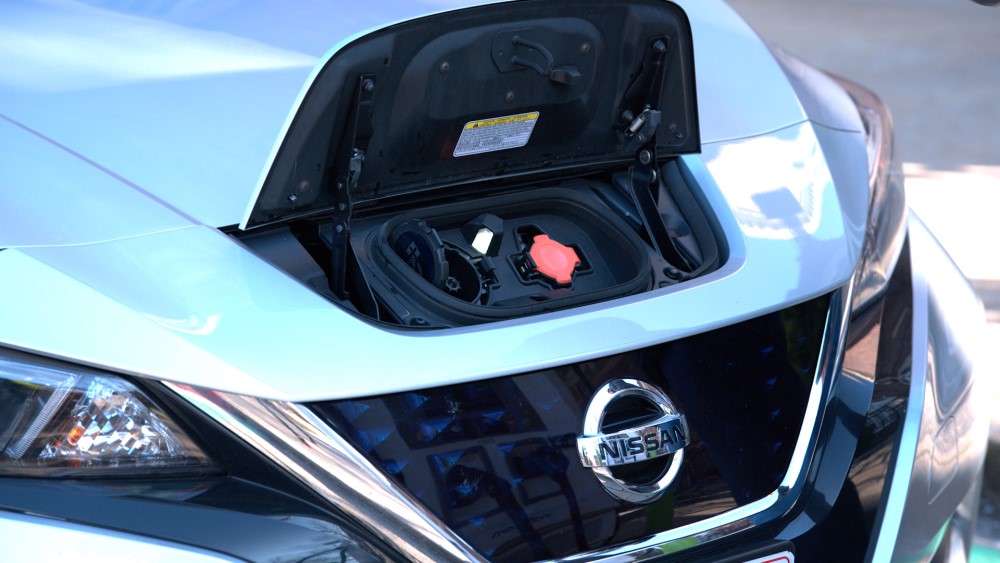It is undeniable that Electric Vehicles (EV) are here to stay. As battery technology continues to improve, the usable range an EV can travel on a full charge increases. EVs appear to be a great, green energy alternative to the typical vehicle with an internal combustion engine. But there are a number of important aspects of EVs that must be considered before deciding to purchase one.
 The primary reason most people choose an EV is because it is “green”. A typical car is powered by an engine that burns gasoline or diesel fuel and produces exhaust emissions in doing so. An EV uses a battery to store electricity, which is used to drive electric motors and propel the car, while producing no exhaust emissions. On the surface, the EV appears to be the clear winner in regards to producing exhaust emissions. But what is typically not taken into account is how the electricity was produced to charge the EV’s battery. HES purchases its electricity from TVA, a federal agency. According to information on the TVA website (tva.com), in 2020, TVA generated approximately 59% of its total electricity output using green energy. So although a local EV driving down the road produces no tailpipe emissions, only 59% of the electricity used to charge the battery was created using “green” energy sources. The remaining 41% was generated using electricity generating plants burning coal or natural gas that produced emissions.
The primary reason most people choose an EV is because it is “green”. A typical car is powered by an engine that burns gasoline or diesel fuel and produces exhaust emissions in doing so. An EV uses a battery to store electricity, which is used to drive electric motors and propel the car, while producing no exhaust emissions. On the surface, the EV appears to be the clear winner in regards to producing exhaust emissions. But what is typically not taken into account is how the electricity was produced to charge the EV’s battery. HES purchases its electricity from TVA, a federal agency. According to information on the TVA website (tva.com), in 2020, TVA generated approximately 59% of its total electricity output using green energy. So although a local EV driving down the road produces no tailpipe emissions, only 59% of the electricity used to charge the battery was created using “green” energy sources. The remaining 41% was generated using electricity generating plants burning coal or natural gas that produced emissions.
EVs do have many advantages vs. traditional internal combustion engine vehicles. As stated above, even accounting for how the electricity is produced that is used to charge the EV’s battery, EVs produce fewer emissions than traditional vehicles. The electric motors in EVs produce great amounts of torque at all vehicle speeds, typically making them accelerate much quicker than a comparably sized traditional vehicle. Electric motors are also nearly silent, while producing very few vibrations, making for a quiet, pleasant driving experience. EVs can also be charged in your home, eliminating trips to gas stations. In addition, the cost per mile for fuel for an EV is about half that of a traditional vehicle. Maintenance costs tend to be much lower on an EV because of the elimination of the internal combustion engine and transmission. Also, purchasing a new EV can qualify you for a federal tax credit of up to $7,500. But despite these numerous advantages, there are also some disadvantages to EVs.
 One of the biggest disadvantages to EVs, especially for long-distance travel, is the maximum range of the fully charged EV. At this time, EVs can be bought with advertised maximum ranges from approximately 150 to 400 miles, with the average range being around 200 miles. Taking long trips in an EV requires planning for regular stops to recharge the battery at EV recharging stations. The length of these stops depends totally on what type of charging station is available. Traveling with an EV can also bring about “range anxiety”. Running out of charge on the road means the vehicle will have to be physically loaded onto a car carrier and taken to a charging station. Simply putting a couple of gallons of fuel in the tank to get to the next gas station is no longer an option.
One of the biggest disadvantages to EVs, especially for long-distance travel, is the maximum range of the fully charged EV. At this time, EVs can be bought with advertised maximum ranges from approximately 150 to 400 miles, with the average range being around 200 miles. Taking long trips in an EV requires planning for regular stops to recharge the battery at EV recharging stations. The length of these stops depends totally on what type of charging station is available. Traveling with an EV can also bring about “range anxiety”. Running out of charge on the road means the vehicle will have to be physically loaded onto a car carrier and taken to a charging station. Simply putting a couple of gallons of fuel in the tank to get to the next gas station is no longer an option.
Most EV owners charge their car over night at their home. Plugging the car into a normal household outlet adds about 3-4 miles of range for every hour of charge. Using a 240 Volt level 2 charger increases the charging ability to 15-25 miles of range per hour. At the upper end of chargers are the DC fast chargers. These charges can charge most EVs to 80% capacity in less than an hour.
One other negative factor of owning an EV that is typically not discussed is the effects of cold weather on the range of the EV. Cold weather decreases the battery’s operating efficiencies, decreasing the EVs maximum range. In addition, all heat required to warm the cabin and maintain a comfortable temperature comes from the battery. This also decreases the overall cold-weather range. In some tests, maximum cold-weather range is decreased approximately 40% at near freezing temperatures.
Deciding whether to purchase an EV requires a thorough assessment of your transportation needs. If the vehicle will only be used for short trips, an EV can be a great alternative. Also, if a household has at least one traditional vehicle for longer trips, an EV makes sense for shorter trips. As new EVs are being introduced, prices continue to come down. In addition, most models qualify the purchaser for a $7,500 federal tax credit. Yearly fuel costs (electricity vs. gasoline) save the typical EV owner $500-1000 per year. However, if a level 2 charger is installed at the home, the cost of the charger and installation can cost $500-1000.
There is a wide variety of additional information available online to help you make your decision. In the right situations, EVs can be very appealing, offering decreased fuel and operating costs, while also producing lower overall emissions. However, before purchasing an EV, it is very important to assess your overall driving needs, and the pros and cons of owning and driving an EV, to make certain an EV will fulfill your needs.
For more information from TVA’s EnergyRight Program, click here.